|
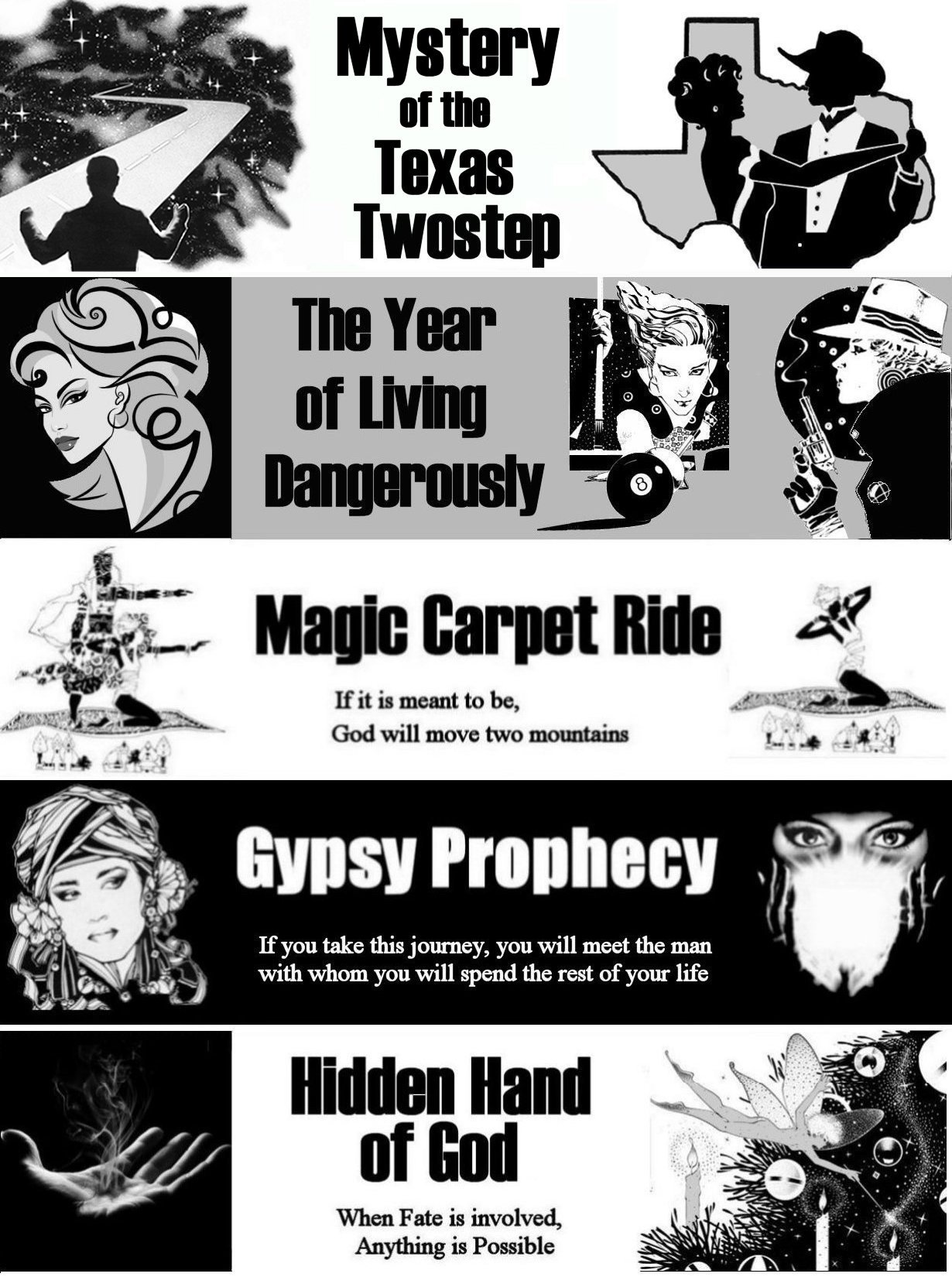
|
MYSTERY OF THE
TEXAS TWOSTEP
CHAPTER NINE:
SATURDAY NIGHT FEVER
Written by Rick
Archer
|
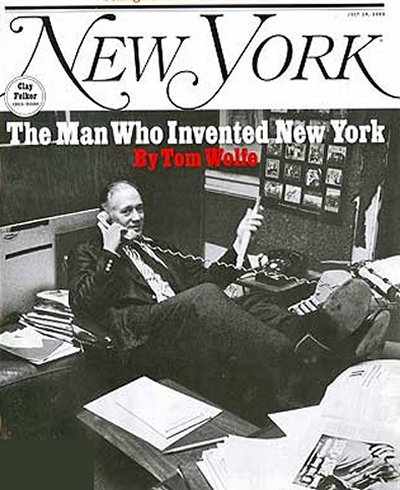 |
Virtually
against my will, I have accepted an opportunity to
teach a Country-Western dance class. Why on earth
would I continue with a chapter about Saturday Night Fever?
Because the answers to 'The Mystery of the Texas Twostep'
originated with this famous Disco movie.
Naturally you
assume I am referring to John Travolta. No. I am
referring to Clay Felker, the Wizard of Oz. As my
story unfolds, we will discover how magazine editor Clay
Felker became the hidden link between Saturday Night Fever and Urban Cowboy.
Ask yourself
this question: Have you ever read another book that
claims to prove the existence of Fate? My guess is 'No'.
Speaking for myself, I have never read a book that attempts
to use a series of real-life experiences to illustrate Fate
in action. On the surface, this book is a memoir about
my dance career. However, my secondary purpose demonstrates how I came to believe in Fate.
Lots of
people say they believe in Fate, but no one ever seems to be
able to explain 'why' in a convincing fashion.
I know this
sounds odd to say, but one day it occurred to me I
might just be the best person to make a powerful case for
the existence of Fate. I do not say this to be
egotistical, but rather to suggest I was placed in this
unique position for a reason. I came to believe I had been
given a Cosmic responsibility to share my ideas. I hope this
bold claim does not offend any of my Readers.
If I am correct
that 'Fate' exists, then it will affect all of us,
not just me. To demonstrate my point, the origin story
of Saturday Night Fever is one of the most
dramatic examples of Fate in Action I have ever come across.
As I tell the
story, you can decide whether you agree with me or not.
|
|
ROBERT STIGWOOD,
MUSIC IMPRESARIO
|
Robert Stigwood
was the man who brought Saturday Night Fever
to the silver screen. As we shall see, he benefitted
greatly from the talents of John Travolta and the Bee Gees.
In addition, Stigwood got 'very lucky'. (Hint: Fate in
Action)
Robert Stigwood got his start as a music
producer. Born in Australia, Stigwood moved to England at age
21. Stigwood had a college degree, but no idea what to do with it. After a series of dead-end jobs, Stigwood discovered
he had a knack for promoting local
rock bands in Portsmouth.
Stigwood got his start in mid-Sixties as the manager of
Eric Clapton. It was Stigwood's idea to pair Clapton
with Jack Bruce and Ginger Baker. This led to 'Cream', a fabulous rock band that briefly rivaled the fame
of the Beatles and Rolling Stones.
Stigwood also managed
'The Who' (Tommy, Pinball
Wizard), but he had a soft spot for the Bee Gees since they
were very young and hailed from Australia. In turn the
three Gibb brothers... hence the name... were in awe of Stigwood. He was the man
who gave them their start. The three brothers described
Stigwood as a "creative genius with a quick and very dry wit."
Stigwood was aggressive, a manager who wasn't afraid to take
chances. As Stigwood was fond of saying, "There are
many ways to become a failure, but never taking a chance is
the most effective."
Starting with Broadway musicals, he moved into productions on stage
and film involving
music.
Among
Stigwood's stage credits were
Tommy,
Evita,
Sweeney Todd, Hair,
Pippin,
Oh Calcutta, and
Jesus Christ Superstar.
His movie credits included
Grease,
Tommy,
Gallipolli, and Jesus Christ Superstar.
There was also a musical film extravaganza titled
Sgt. Pepper's Lonely Hearts Club Band.
Saturday Night Fever starring his friends the Bee
Gees plus up and coming star John Travolta became the best
example of how Stigwood combined music with drama on screen.
|
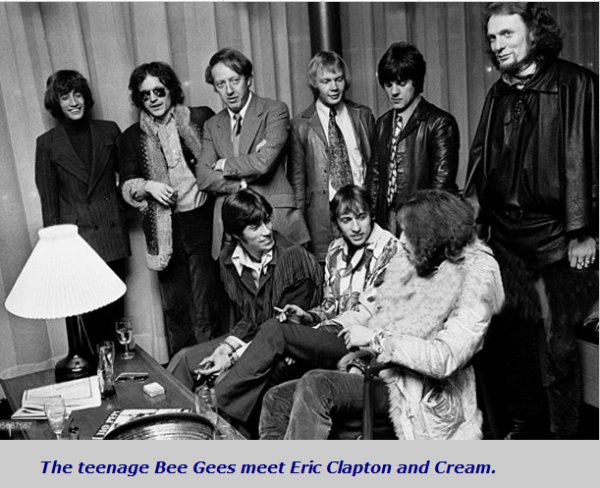
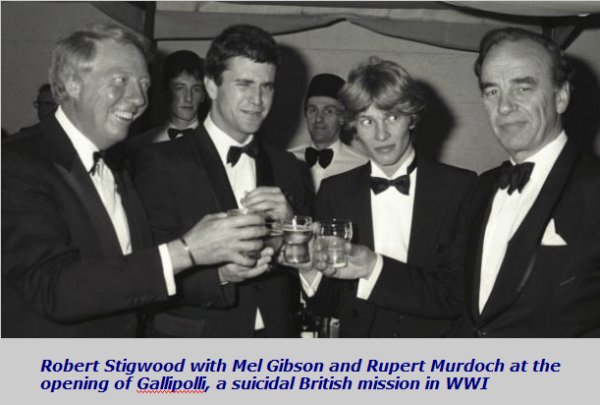
|
The moment Grease
made its debut
in 1971, Robert Stigwood
was convinced it
would become a blockbuster movie. Due to his
certainty, Stigwood
swiftly acquired the option to produce the movie version of the
Broadway musical.
However, there was one catch.
In early negotiations, Stigwood's option stipulated production could not begin
while the musical was still running. Stigwood objected
to such an open-ended agreement, so a clause was added.
Stigwood now had permission to begin production in the spring of 1978
even if the musical was still running. Stigwood was
not worried about the distant date. No Broadway
musical had ever lasted that long.
On
September 25, 1976, Robert Stigwood held a press conference
at the Beverly Hills Hotel to announce that the Robert
Stigwood Organization (RSO) had signed John Travolta to a
million-dollar contract to star in three films.
Stigwood
believed Travolta would be perfect as 'Danny Zuko',
the star of Grease. And so he would.
However, there was a problem.
Stigwood had
completely forgotten about the clause. After all, it
had been five years since he took out the option. Uh
oh. It was bad luck that Grease was still running
strong in 1976. When the lawyers informed
Stigwood that he would have to wait until 1978, he flipped
his lid. How could he have been so blind? And what was Stigwood supposed to do with Travolta till then?
As we shall see,
the 'lucky' and quite timely solution to Stigwood's serious mistake became the first piece in the 'Robert Stigwood Synchronicity'.
(Hint: Fate in Action)
|
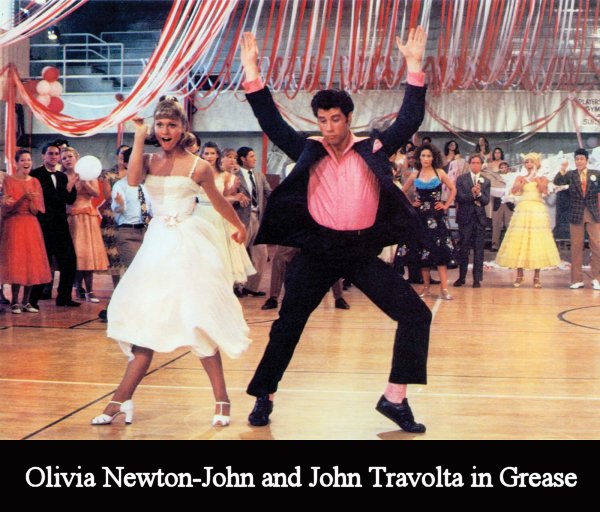 |
Synchronicity is
a term coined by Swiss
psychotherapist Carl Jung. Dr. Jung
placed great emphasis on 'meaningful'
Coincidences. He
suggested paranormal events such as
precognitive dreams, premonitions, ghosts,
ESP, and improbable coincidences might turn out to be
natural events for which modern science has not yet
advanced far enough to comprehend.
|
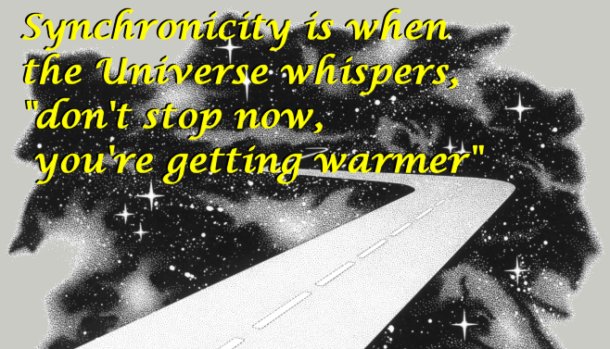 |
What is the
difference between
Coincidence and Synchronicity?
Consider the words 'singular' and 'plural'.
A Meaningful Coincidence is a single event. A
Synchronicity is a series of meaningful coincidences
and related curious events that seem 'linked
together'.
To believe in Synchronicity, one
has to accept the old saying there are no accidents.
However, not everyone agrees with this idea.
Synchronicity is one of those mumbo jumbo terms like
mojo, voodoo,
premonition and sixth sense
that skeptics relegate to the dustbin of
pseudoscience.
So who is right? Good
question.
Everyone
knows
the concept of Synchronicity
cannot be scientifically proven. And
yet there are times when things
get so weird that we feel compelled to question
Reality. Take for example ESP and UFOs.
Although Science claims they do not exist, countless
people have spoken of contradictory experiences.
|
Robert Anton Wilson, a science fiction
writer, had an interesting take on
the value of curiosity. Wilson
praised people who question
Reality. If a person sees
something happen that is out of the
ordinary and questions it, he might feel
foolish. How dare he, admittedly
not a scholar, entertain blasphemous thoughts that
things like ESP exist when
science has declared it impossible?
Maybe he's right, maybe he's wrong, but
Wilson said
there is no harm in speculation.
However, if a man has a question but
NEVER investigates, then Wilson called
him a fool forever. He said people
who scoff at the idea of Precognition
will do the same thing with ghosts,
UFO's, and Coincidence.
|
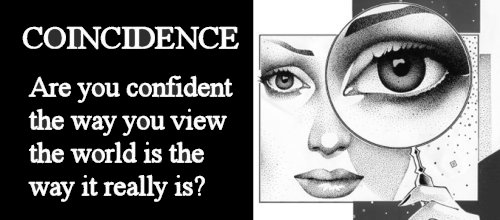 |
Wilson pointed out there is much about
this world we do not understand.
Although Science has made great
progress, it is not infallible.
"Every fact of science was once damned.
Every invention was considered
impossible. Every discovery was a
nervous shock to some orthodoxy.
Every artistic innovation was denounced
as fraud and folly. The entire web
of culture and progress, everything on
earth that is man-made and not given to
us by nature, is the concrete
manifestation of some man's refusal to
bow to Authority.
We would own no
more, know no more, and be no more than
the first apelike hominids if it were
not for the rebellious, the
recalcitrant, and the intransigent.
As Oscar Wilde once said, Disobedience
is man's Original Virtue."
-- Robert Anton
Wilson
I agree
with Robert Wilson. If we fail to
challenge our view of the Universe every
time we observe a situation that defies
explanation, we cut off any chance to
advance human knowledge.
With that sentiment
in mind, I am convinced the background story
of Saturday Night Fever was so
full of lucky breaks that at some point a
person had to admit it was not 'Luck',
but rather 'Fate in Action'.
The 'Robert Stigwood
Synchronicity' is the story of how
John Travolta, Nik
Cohn, Robert
Stigwood and the Bee Gees turned a
low-budget, unloved, throwaway movie into a
Billion Dollar Bonanza.
In 1976,
everything Robert Stigwood touched turned to
Gold. This was his Brightest Day.
For this one special moment in time, all the
elements involved in Saturday Night
Fever fit together so perfectly one
might be tempted to give the concept of
Synchronicity further thought.
|
|
In 1976, Nik Cohn was a recent addition at
New York
magazine. Due to his experience covering famous music acts
such as The Who over in England for British
tabloids, Cohn was hired to cover the
local New York music scene.
More than likely Clay Felker
barely knew Nik Cohn. That said, Cohn would become a
central figure in Felker's life as well as Robert
Stigwood's.
For that reason, Clay
Felker and Nik Cohn are important pieces in what I refer to
as the 'Robert Stigwood Synchronicity'.
As we have read,
Clay
Felker had an
eye for underdogs as well as celebrities and big shots. Felker published
stories about people from all walks of life. That
included the Mafia,
hippies, politicians on the take, corrupt Wall Street
brokers,
dirty cops, drug addicts, starving artists, prostitutes and
angry
radicals. You name it, Felker wanted to cover them
all.
Felker's eye for unusual lifestyles was one of his
greatest gifts. Unfortunately, Felker's special talent
underscored the intense irony of a mistake he made in 1976.
Thanks to Nik Cohn, a certain 'subculture' Felker
could care less about... Disco... would become a very
painful embarrassment.
Nik Cohn was born in London in 1946. Cohn got his
start as a rock critic. Always the clever guy, by the
age of 18 Cohn was a fixture on the swinging London Mod
scene of the late Sixties. He partied with rock stars
and hung out with them on tours.
Cohn was an adept social climber. He parlayed his media
position into a circle of contacts within the British music
business. One of the men he rubbed elbows with was
Robert Stigwood. This happened when Cohn joined the
Who on tour. Stigwood was their manager and
booking agent at
the time.
Nik Cohn had an odd claim to fame. Cohn
was a close friend of Pete Townshend, lead singer of the
Who. Cohn was an avowed pinball maniac and
Townshend loved to watch him play. Cohn's obsession
with the pinball machine became the inspiration for
Townshend’s classic 'Pinball Wizard'.
The Who became Cohn's
connection to Stigwood's business operations. Cohn
spent considerable time on the set during the 1974 filming of Stigwood's
film version of Tommy, a movie that featured the Who.
In the process, Cohn became
friends with Bill Oakes,
president of RSO Records (Robert Stigwood
Organization). In 1975 Oakes invited Cohn to join
him in New York. After crossing the Atlantic, Cohn
crashed on the couch in Oakes' apartment. That is when Cohn
landed a contract New York
magazine. His job was to cover the New York music scene.
Anthony
Haden-Guest:
"Cohn and Oakes
liked to visit nightclubs. Tired of Regine's,
their usual hangout, a friend persuaded Cohn to visit
2001 Odyssey
in Brooklyn. The
clientele was mostly working-class, straight and
Italian.
Cohn's visit to the disco gave
him an idea. His experience
as a writer let him know when a story
had 'movie' plastered
all over it. Cohn went
back and immediately started writing."
-- Excerpt from The Last
Party: Studio 54, Disco, and the
Culture of the Night.
Written by Anthony
Haden-Guest
Bill Oakes, RSO Records:
"Nik was still sleeping on my
couch when he was writing the Disco story for New York
magazine. Nik was fascinated by the idea
that dance music and this new style of dancing had
migrated to the boroughs. Up till now, Disco was
on the fringe. Disco was first a gay thing, then
it became an underground thing. Now rumor had it
that Disco was a blue-collar thing.
Nik knew what he was doing from
the start. He thought this Disco thing was his
ticket to ride. Nik
gave a copy of his story to
Kevin McCormick before handing it to
Clay Felker, then made me promise to make sure Kevin
paid close attention.
Kevin McCormick was my
co-worker at RSO. He was in charge of
film development. Kevin had already been working
with Nik on another movie project. The
moment McCormick read the
story, he immediately passed
it up the ladder to Robert Stigwood."
|
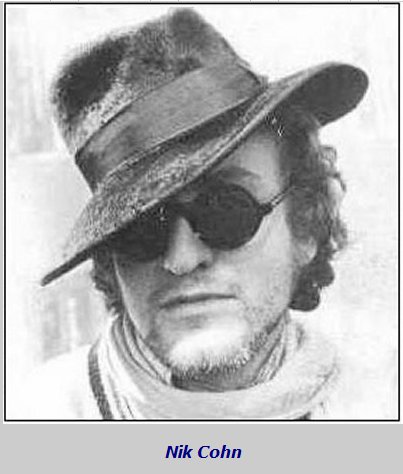
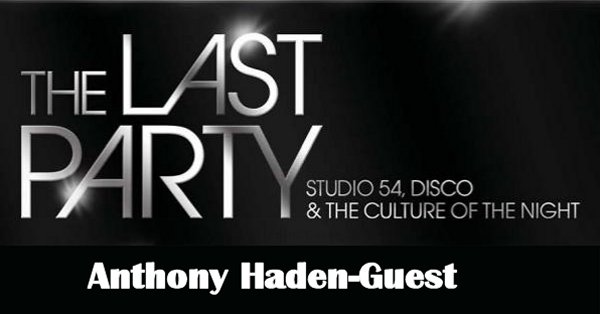

|
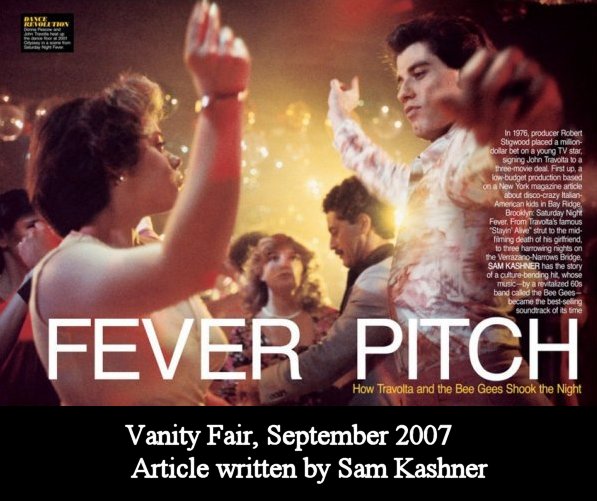 |
According to a
2007 Vanity Fair article written by Sam Kashner, Nik Cohn
was interested in the Disco scene from the moment he
moved to New York. Here is an excerpt:
On an icy winter night in 1975, Cohn had made his
first trip to Bay Ridge in Brooklyn with a disco
dancer called Tu Sweet, who would serve as his
Virgil.
"According to Tu Sweet," Cohn later wrote, "the
[disco] craze had started in black gay clubs, then
progressed to straight blacks and gay whites and
from there to mass consumption-Latinos in the Bronx,
West Indians on Staten Island, and, yes, Italians in
Brooklyn."
In l975, black dancers like Tu Sweet were
not welcome in those Italian clubs; nonetheless, he
liked their passion and their
moves. "Some of those young guys, they have no lives," he
told Cohn. "Dancing is all they got."
A brawl was in progress when Sweet and Cohn arrived at
2001
Odyssey. One of the brawlers lurched over to
Cohn's cab and threw up on his trouser leg. With
that welcome, the two men hightailed it back to
Manhattan, but not before Cohn caught a glimpse of a
figure, dressed in "flared, crimson pants and a
black body shirt." Seeing the shadowy
figure coolly watch the action from
the club doorway. Cohn was impressed. "There was a certain style about
him, an inner force, a hunger, and a sense of his own
specialness. In short, he looked like a star."
|
As they drove
back Manhattan, Cohn was thrilled. He
had his hero and his story. Returning to Oakes' apartment, Cohn
wrote about the man in the doorway, tagging him as a great dancer who yearned for a chance to escape
the mean streets of Brooklyn. Was 'Doorway Man'
really a great dancer? How would Cohn know? Cohn never left his cab.
In other words, Cohn's story was a fake,
pure mythology. However, no one knew that but him.
Nor did his lie stop Cohn from adding
"everything described
in this article is factual."
Believe it or
not, that lie would become worth $500,000.
Finishing his story in the spring of
1976, Cohn
asked Felker for permission to publish a story about
the Disco
dancers.
His story depicted
a world of
poor, semi-educated Brooklyn teenagers who wrapped
their entire lives around Saturday nights at
the Disco
club.
Felker was not at all
impressed. Laughing in Cohn's face, Felker
told the writer that no one
cares about a bunch of kids who like to dance on Saturday
night. Stories like this are as old as Motown and Elvis
Presley. Try writing something original.
Cohn was
undaunted. Based on his plan, getting this story
published was
of vital importance. So Cohn went behind Felker's back.
First he commissioned staff artist James McMullan to draw a
picture based on his Disco story. Once he had his
picture, Cohn took the story and the artwork to Milt Glaser,
Felker’s co-editor and design director. Glaser
liked the story
and was impressed by the
artwork. He was also aware that Felker was
not himself at the moment due to
serious financial issues with
the magazine's board of directors.
Glaser decided to champion Nik Cohn's story.
Milt Glaser:
"This was a good story
idea, but Felker didn’t seem to want to listen. I
knew about Clay's habit of picking up ideas at parties
and dinners, so I told
Cohn to ask Felker’s
assistant where the boss was going to dinner that night.
Then I encouraged Cohn to visit the restaurant and make
a second pitch."
Nik Cohn took the hint. After learning where Felker was
dining, Cohn took it upon himself to visit the
restaurant. Felker was very irritated by the
interruption. Felker told Cohn he would ask his friends what they thought
and get back to him tomorrow, then told him to leave.
As Felker expected, his friends
were unimpressed by the story. However, the following
morning he paid a visit to
Jim McMullan, the artist. McMullan had visited
Cohn's Disco
and taken
photographs. Using one snapshot in particular as a
model, McMullan had drawn a
fascinating picture.
Jim
McMullan: "Clay said, 'Jim, what kind of a story are you telling?
Nothing’s happening here.' Which was true if you
ignored the dancing. No knife fights, no dramatic moments. Just people dancing.' Clay could not have cared
less about people who were dancing. To him, the dancing was
meaningless."
Nik Cohn:
"When I proposed
the story to Clay Felker, his response was lukewarm at
best. At night, over dinner at Elaine's, Felker conducted a
flash poll with discouraging results. Felker
reported back to me that no one present knew anything
about
Disco and no one gave a damn either. However, to
my surprise, he let me go
ahead with the story anyway."
Milt Glaser was the reason Felker changed his mind.
Jim McMullan: "Milt
took Clay aside. He said, 'Look, Clay,
these pictures are incredible. Once people see these
pictures, everyone
will understand the story.'"
Felker took another look at the pictures and begrudgingly
admitted Glaser might be right.
Despite his mixed feelings, Felker finally gave in and let the story
run.
Given Felker's lack of enthusiasm it is a small wonder the story ever got
published at all. Good deeds are never
left unpunished. Felker would one day pay a painful price for ignoring his
better judgment.
Titled
'Tribal
Rites of the New Saturday Night',
Nik Cohn's
story appeared in New York
magazine on June 7, 1976. The
finished product described young
working-class Italian-Americans who wrapped their lives around this
Saturday night dance ritual. Due to dead-end jobs and
pessimism about the future,
dancing at the local disco seemed to be their main purpose in life.
Nik Cohn got lucky, very lucky.
(Hint: Fate in Action).
Felker took Glaser's suggestion and put Jim
McMullan's artwork on the cover of the magazine.
The cover picture was so intriguing that people
became curious to read the story.
Although Disco
music was a fringe phenomenon exclusive to young
people,
Cohn's fairy tale
struck a chord with people of all ages.
|
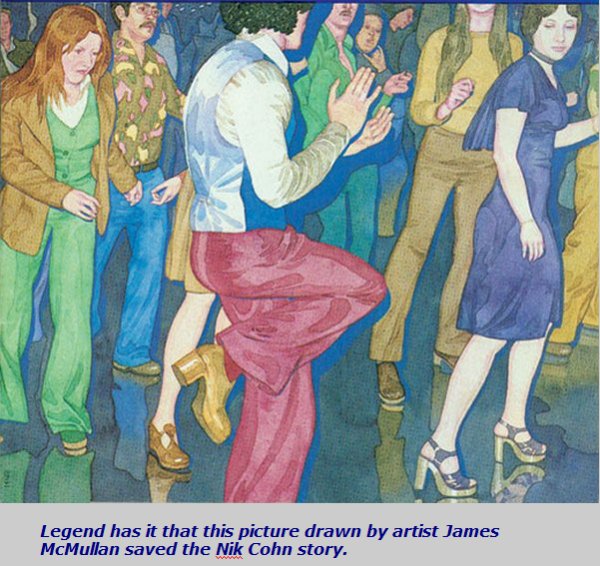
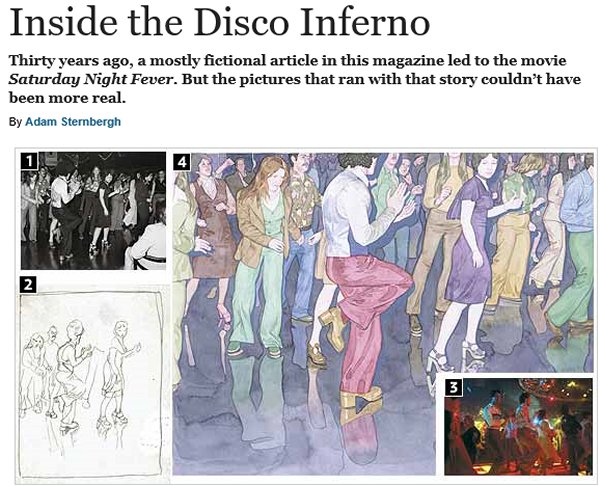
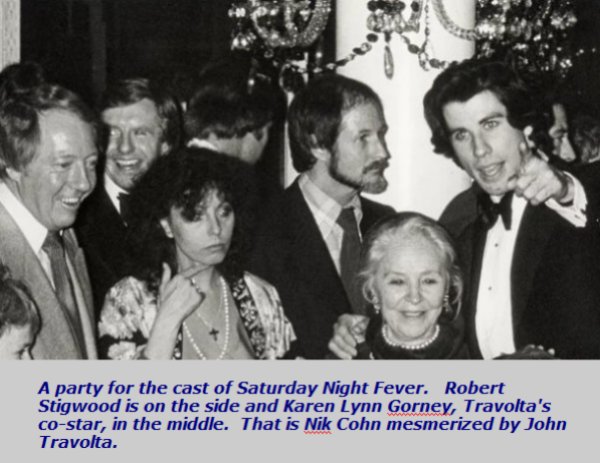
|
Rick Archer's
Note:
I have written this story based on snippets culled from various Internet
stories. As everyone knows, you can't trust everything you
read on the Internet. I did my
best to be accurate, but I was forced to guess at some of
the details. In particular, I am at a loss to know the exact
timeline between the magazine publication of Cohn's article and the
day Robert Stigwood noticed a copy of the article sitting on his
desk. My best
clue comes from Bill Oakes, Nik Cohn's roommate and the man in charge of
music at RSO.
"Nik knew what he was doing from
the start. He thought this Disco thing was his
ticket to ride. Nik
gave a copy of his story to
Kevin McCormick at RSO before handing it to
Clay Felker, then made me promise to make sure Kevin
paid close attention." -- Bill Oakes
Cohn was unscrupulous,
but he was also a clever guy. According to Oakes, Nik Cohn had 'movie
script' in his mind from the start.
Why? Cohn had watched
Ken Russell had write an entire rock opera based on the lyrics of
the 'Pinball Wizard' song.
Using Russell's inspiration, Stigwood produced Tommy, a
rock musical movie. It was the first of its kind. Cohn
figured that if Ken Russell could create a smash hit from virtually nothing, then so
could he. He realized his RSO
connections could pay off in a big way if he could just come up with
a useful story. Rather than wait for a true story to come to him,
Cohn took matters into own hands and made up a fictional tale, then
used his friends Bill Oakes and Kevin McCormick to pass the story
on to Robert Stigwood.
|
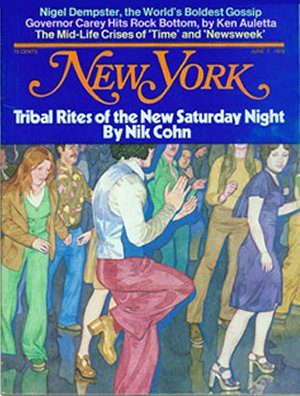 |
Once he got the news
that his story was laying on Stigwood's desk, Cohn turned around
and pitched his story to Clay Felker. If Cohn could
get his article published, the magazine's reputation would validate his
false story as 'true', thereby giving his story credibility.
If the story managed to generate a lot of interest, Cohn knew the
warm public response would greatly increase its value as a potential
movie script. After the story was published, my guess is that Cohn turned around and
contacted various producers in the area just in case Stigwood did not bite.
I base this on a detail from Sam Kashner's Vanity Fair article.
"In
the l970s it was almost unheard of to
buy a magazine article for a movie, but
Cohn's "Tribal
Rites" attracted enough attention that
producer Ray Stark (Funny Girl) and a
few others bid on it."
So what
was the timeline? Nik Cohn's
story was published in
New York magazine on June 7,
1976. Robert Stigwood made his
Travolta 'three picture' announcement on
September 25, 1976.
Those dates suggest a three and
a half month gap between the publication of
"Tribal Rites" and Stigwood's
Travolta announcement. Forgive me if I
am wrong, but I don't think Stigwood was
interested in Cohn's article during this
gap. My guess is
that Stigwood spent this time in negotiation with
Travolta to guarantee his participation in Grease.
However, shortly after signing Travolta, Stigwood
realized had forgotten about the
'not
until Spring 1978' clause.
Just his bad luck... Grease had
turned into the
longest running play in Broadway history.
Stigwood felt
blindsided. How could he have
forgotten about that clause? And why hadn't
any of his overpaid lawyers reminded him of this before he signed Travolta?
Stigwood brushed it off. He assumed for a little cash, the producers would let
him start sooner. Wrong. The producers refused to let Stigwood proceed early.
Uh oh. Stigwood had signed Travolta based on the
premise
that Grease would be available soon. Now
he would have to wait until 1978. Two
years is an eternity in show business.
What was Stigwood supposed to do with
Travolta till then? That was the magic
moment when Cohn's story suddenly appeared
as if by magic. But it wasn't magic,
was it? This scenario was Nik Cohn
realizing this was his golden opportunity.
It is said
that Stigwood recalled Cohn's story soon after he got the bad news
and took another look. Maybe so, but I
think a more likely explanation was inside information between Bill
Oakes and Nik Cohn.
Bill Oakes comes home
one night and says, "Hey Nik, guess
what? Stigwood just found out that Grease
won't be available for two years!"
Nik Cohn replies, "No
kidding? Hey, tell McCormick to remind Stigwood of my
'Tribal
Rites' short story as an alternative to for Grease!"
Whatever the scenario, Stigwood
recognized the story's value the moment he
saw it. The role of Danny Zuko and
Tony Manero were virtually identical.
My, my, what a fortunate coincidence to have
the perfect script available at the exact moment Stigwood needed it.
Robert Stigwood had just gotten 'unbelievably
lucky'.
(Hint: Silver Lining
Alert. When Fate is involved, sometimes Bad Luck turns into
Good Luck. We now have
three pieces of the 'Robert Stigwood Synchronicity':
Clay
Felker, Nik Cohn, John Travolta.)
|
|
Fred Gershon, RSO lawyer in charge
of handling the Nik Cohn negotiation:
"I was Robert's lawyer and personal
friend. Stigwood called me up and his voice was
full of excitement.
"Fred,
I see a hundred million dollar movie!"
"There are no
hundred million dollar movies," I
answered. "You are crazy."
"No,
I'm serious. This is a hundred million
dollar movie. Get me the
rights!"
Disco was
already happening,
but it was pretty much under the radar. Disco was
definitely
not the worldwide craze it became
after the movie. So far it
was limited to the smart set
at Studio 54
and the gay set. According to
Nik Cohn, Disco was just now spilling over
to the general population. Robert
had been paying attention. He
saw this style of dance
happening in Brazil. The year before
we went on the maiden voyage of the Concorde from
Paris to Rio. The Rio
music scene was
wild and very
exotic. The music never
stopped and neither did the dancing.
Robert saw the same thing
happening in England, France, Germany.
He commented the music was catching
on in Europe.
Five years
earlier Disco would have been
deemed effete for
straight men to even be
seen on a dance floor. Now
the men were strutting like peacocks, probably thanks to Mick Jagger. It was Robert's belief
that a Tony Manero existed in every community in the
world.
So I got an option on Cohn's
article for $10,000 and assumed the
deal was done. Kevin McCormick was assigned to produce.
However producer Ray Stark
heard about it and pounced before Cohn's deal had
been finalized, so that raised the
price. No doubt Cohn was
pitching it behind my back to everyone with a phone number.
Stigwood ran out of patience
and decided to handle the negotiations himself.
That's how serious he was."
Most people
would have jumped at
$10,000. However, Cohn had
inside information. Once
his pal Bill Oakes
clued him in on Stigwood's Travolta dilemma,
Cohn had Stigwood right where he wanted him.
"Hey, Nik, you won't
believe this," Oakes said, "but Stigwood told his lawyer he thinks this
movie will make a hundred million!"
Oh
really? Such is value of inside information.
And, since the deal with Fred Gershon had not been
finalized, Nik the Slik raised the price. First Cohn
told Gershon that another producer was really interested.
Then he dropped the bomb. "Gosh, I'm
sorry, Mr. Gershon, but my price tag has just gone up."
Hmm.
Stigwood's lawyer
smelled a rat.
Sensing they were being hustled, Fred
Gershon suggested that Stigwood back off. Stigwood would
not hear of it. After all, Stigwood's intuition told him
this movie could be worth a hundred million
dollars.
Convinced he had to have this story at
all cost,
Stigwood
said,
"I'm going to pay the kid whatever
he wants!"
After telling
Gershon he would handle things himself,
Stigwood
nailed
down the deal by
offering Cohn
the moon and the sun.
First
Cohn was paid $90,000
for rights to his story, a rather steep jump from $10,000.
Cohn still wasn't happy. Now he demanded to write the
screenplay. Stigwood caved and gave
Cohn
permission to write the screenplay for a guaranteed $150,000.
Now we are up to $240,000 for a fake story. However, Cohn wasn't done yet. Cohn
wanted to negotiate percentage points
for the
upcoming soundtrack album.
This was unheard of. Yes, musicians got
percentage points, but never a writer.
However, Cohn had
seen how much money The Who had made from the
Tommy soundtrack. Well aware he had his mark over a
barrel, Cohn took Stigwood to the
cleaners.
Once Cohn's
share of the proceeds rolled in from the best-selling
soundtrack album of all times, estimates placed Cohn's haul
at $250,000. Added together, Cohn cleared half a
million dollars. Indeed, the
intricate timing caused by Stigwood's dilemma had transformed Cohn's
bullshit story from a $10,000
windfall into a half-million dollar Bonanza. It was the scam of
the century.
(Hint: weird
stories are a tell-tale sign that Fate is at work.)
|
JOHN TRAVOLTA,
the perfect actor
|
The key event in
the Robert Stigwood Synchronicity was the 1976 signing of
John Travolta to a three-movie deal for a million dollars.
The main reason for such a large gamble was Stigwood's certainty that Travolta
was perfect for Grease.
What
was Robert Stigwood thinking? A million dollar
contract for some kid with no longevity, no track record?
Even his
own people thought the boss had gone nuts.
"Everyone thought signing Travolta was madness,"
said Bill Oakes, Stigwood's right-hand man. "Nobody
had ever made the transition from television to movie
stardom. That is why a lot of us thought paying a million
dollars for Vinnie Barbarino was going to make us a
laughingstock."
Welcome
Back, Kotter was a 1975 television sensation.
The show was based on a sarcastic, street-smart high
school teacher who takes a group of incorrigible yet
loveable teenagers under his wing and shows them the light.
John Travolta as
Vinnie Barbarino
was the undeniable break-out star of the
show. Ironically, Travolta was a high school dropout
himself. Some suggested Travolta couldn't act his way
out of a paper bag. After all, he was just playing himself.
Maybe so, but his popularity was off the charts.
Travolta could not go out in public without being mobbed.
By the second season, Travolta was receiving more than
10,000 fan letters a week.
Stigwood knew something that Bill Oakes and the other skeptics were not aware
of. Stigwood had been a fan of Travolta
long before Welcome Back, Kotter.
Back in 1971, Stigwood had auditioned Travolta for the lead
in Jesus Christ Superstar. During the
try-out, Stigwood
noticed Travolta had considerable talent.
Unfortunately, Travolta was only 17, much too young
for the part.
Nevertheless, Stigwood made sure to pencil a note to himslef: "This kid will be a very big star someday."
Considering 1971 was also
the debut of Grease, no doubt Stigwood
visualized the young man as a possible star for the movie
version somewhere down the
road. When Travolta
became a TV superstar in the second season of Kotter,
Stigwood could not bear to lose Travolta to someone else.
Convinced that Grease
was the perfect vehicle for the cocky, wise-cracking teen
heartthrob, Stigwood decided to lock up Travolta before the kid's price
climbed any higher.
Then came the bad news. Now that Grease
had become the longest running musical in Broadway history,
his option was not available for two years.
Uh oh. This was serious bad luck!!
Or was it bad luck? Stigwood
certainly thought so. He was heartsick.
Travolta was hot right now. To wait two years for 1978
was utter madness. However, anyone familiar with
Synchronicity would point out that sometimes bad luck has a
funny
way of turning into good luck.
In this case the
Stigwood's problem went away when Cohn's Tribal Rites
story appeared just in the Nik of time (ha ha ha).
Stigwood got lucky again.
Although Cohn had been given $150,000 to write the screenplay,
he was not up to the task.
The director was forced to inform Stigwood that Nik Cohn's screenplay effort was unacceptable. That is
when the director recommended Stigwood replace Cohn with an award-winning screenwriter
named
Norman Wexler. It was Wexler who gave this low-budget
movie its truly extraordinary script. Wexler went on
to win the 1977 Writers Guild of America Award for Best
Original Screenplay. (Hint: Fate in Action)
And what was
Stigwood's other piece of luck? Wait till you hear the
story of the Bee Gees.
|
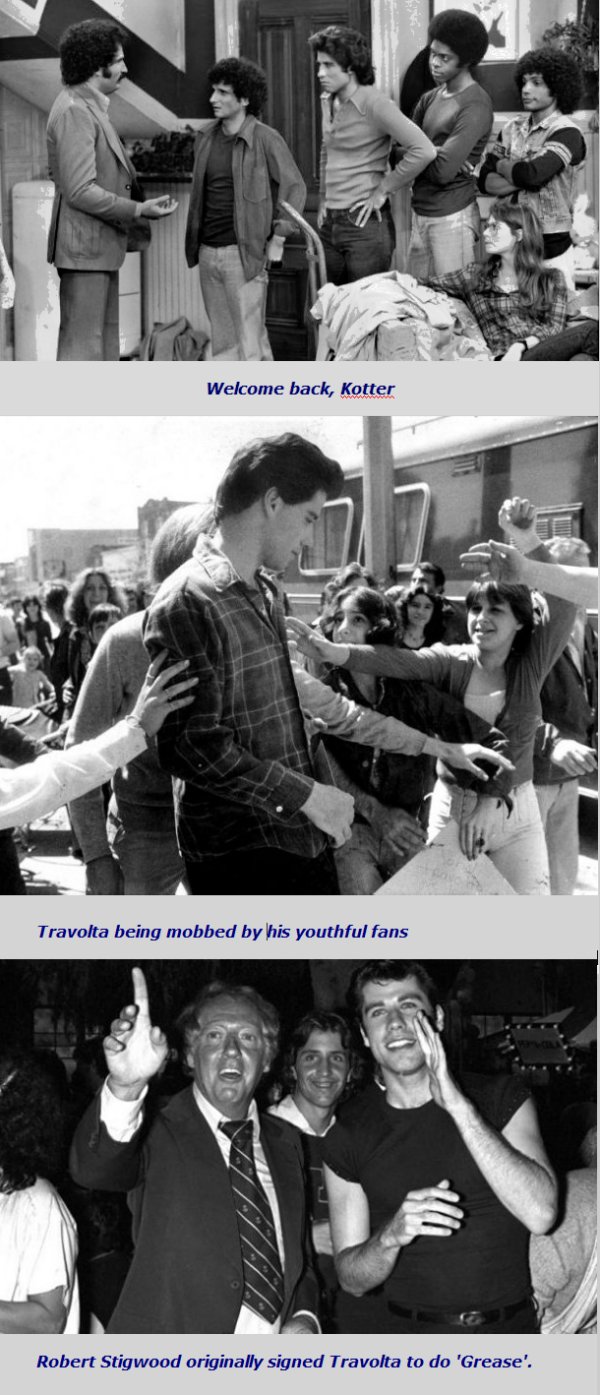 |
The Bee Gees were the final piece of the 'Robert
Stigwood Synchronicity'. The Australian rock group
consisting of three brothers... Barry, Robin, and Maurice Gibb.
Previously I have pointed out how lucky Stigwood was to have
Cohn's script fall into his lap at the perfect time.
And how lucky it was that a talented script writer named Norman Wexler
was available at a critical juncture to rescue the
screenplay. However, one would assume hiring the Bee Gees was not luck.
After all, the Bee
Gees were Stigwood's pet project, his amigos, his
semi-adopted kids. And yet as things turned out, the
Bee Gees came within an inch of missing out on the biggest
break of their life.
The Bee Gees
got their start in the late Sixties. Thanks to Robert
Stigwood, the group immediately scored some initial hits.
Due to their instant success, they were said to be the next Beatles. However, they fizzled almost as fast as they sizzled.
You know the story... drugs, booze, distractions.
The Bee Gees were probably doomed and Stigwood knew it. By the time
the mid-Seventies rolled around, the Bee Gees were washed
up. Although they were terrific songwriters, they had
not had a major hit in years. Their ballad-style songs
were gentle at a time when hard rock dominated the music
scene.
Fortunately Stigwood had a real soft
spot for the three men. Seeing them down on their
luck, Stigwood stayed with the Bee Gees even though he had
many other projects on his plate. Stigwood told the
brothers that he believed in them. He encouraged them
to keep writing. Sooner or later their luck would turn.
In addition, Stigwood had a suggestion. Why not move
away from the ballads? This would allow them to take
advantage of the growing American interest in dance tracks.
Good idea. The Bee Gees moved to Miami
and began to experiment. In 1975, they crafted a
dance-oriented Disco song titled "Jive Talkin'".
To their surprise, this became their first #1 hit in
four years. The band liked their new sound, so
they stayed with it. "You Should Be Dancing"
was released in 1976. This became their
second dance track to hit #1.
Robert
Stigwood was pleased his Disco suggestion had worked out
so well. At the same time, he was surprised at the
depth of interest in this unorthodox dance music.
Stigwood made a point to keep tabs on this strange music
they called 'Disco'. Maybe there was something
there, something catchy.
1976 was important for another
reason. At the same time the Bee Gees were making
their comeback, Stigwood was signing actor John Travolta to
a million dollar three-picture contract, and Clay Felker was
publishing Nik Cohn's bogus story.
Given Robert Stigwood's
close relationship with the Bee Gees, one would assume they were
on board from the
start. Not so.
What was
the hold-up? Where were the Bee Gees like Stigwood had
insisted?
Indeed, the director had been given a
direct order to line up the Bee Gees, but
had ignored
the suggestion. Why? Because John Avildsen could not stand the Bee Gees!
Avildsen considered the Bee Gees to be washed up has-beens.
Furthermore he
could not stand grown men singing in falsetto.
As a result, Avildsen chose to disobey a
direct order to hire the Bee Gees. Furthermore, he
had not told anyone of his decision.
So here they were, ready to begin
filming, and there was absolutely no soundtrack and no Bee
Gees. The timing of this crisis could not have been
worse. Meanwhile,
Stigwood was nowhere to be
seen. During the
pre-filming stage, he was preoccupied trying to
sign the Rolling Stones to his record
label. Stigwood was furious
when he learned of Avildsen's betrayal. First he fired
the director, hired someone better, then got on the phone to beg the Bee Gees
to help.
Robin Gibb had said
this to say:
"People
are always surprised to learn we had nothing to do with the
movie at first. Truth is we didn't know a thing about
the movie. We were completely in the dark as to what Stiggy was up
to.
I
assume that no one had given any real thought to the music
which is kind of funny since I assume the choreography
needed the music from the start. At any rate, our
involvement in the film did not begin
until filming was almost completed in 1977.
Long after the movie was a big hit, I had a conversation
with John Travolta. He told me,
'Your Bee Gee music wasn't involved in the movie in the
beginning. In rehearsal I was dancing to Stevie Wonder and Boz Scaggs.'
However, one day when Travolta was
doing dance rehearsals, someone
put on our song 'You Should Be Dancing,'
a hit which had
been released the previous year.
Travolta said, 'Hey, that is a pretty good song.
Nice beat. Why don't you see if these guys have any other songs?'
I
don't know if it was Travolta's idea or Stigwood's idea, but
out of the blue Stigwood rang us up
and
said the song 'You Should Be Dancing'
was great and Travolta liked it. He
told us a little bit about the movie... Travolta was playing
this
cocky, womanizing dance stud. Then he asked if we had any other
songs we could contribute.
Stigwood
said, 'We're putting
together this little film, low budget, called Tribal
Rites of a Saturday Night, lots of dancing. Would you guys have any songs
on hand?'
We looked at each other. That had to be the stupidest
name for a movie ever. We all nodded, 'No way, forget it!'
We said, 'Hey, look, Stiggy, we can't, we have our own
album to do. We haven't any time to sit down and write for a
film.'
We told Stiggy the truth. We were over in Europe mixing a live
album in northern France.
We barely knew what his
movie was about and we
really didn't want to be bothered with
it.
But then Barry pointed
out that Stigwood had been our friend through thick and
thin. That's when our conscience kicked in.
So we
changed our mind and got to work. We wrote five songs in one weekend. It
was crazy. Once we started, our imaginations were on
fire.
In the end we had five
new tracks - 'Staying Alive,' 'How Deep is
Your Love?,' 'Night Fever,' 'More
Than a Woman' and 'If I Can't Have You'.
Plus we offered the previously released 'Jive
Talkin' and 'You Should Be Dancing.'
Seven songs total.
It was also our idea to call
the movie Saturday Night Fever, because the competitions
were on Saturday night and we already had the track
on the music album 'Night Fever.'
-- Interview from Observer
Music Monthly, Jan.
2008
In an extraordinary show of
loyalty, the
Gibb brothers stopped what they were doing and worked 'feverishly' on an uncertain project
based on a short story
they had never read.
In a matter of one week, Barry Gibb handed his
manager Stigwood seven dance tracks
despite having no idea how they would be used.
The Bee Gees
were rewarded beyond their wildest dreams when they became the featured artists on the
upcoming blockbuster SNF music album.
Within months, the Bee Gees would become the hottest group
on the planet. The movie soundtrack was the top selling
album in history until Michael Jackson's Thriller.
Barry Gibb:
"You've got to remember, we
were fairly dead in the water at that point. The Bee Gees'
sound was basically tired. So we had to find
something and we turned to dance music. Who would have
guessed how this would turn out?"
-- Sam Kashner, Vanity Fair
article, 2007.
Ah, Fate and its
twists and turns. The Bee Gees were eternally grateful
to Robert Stigwood. Stigwood made
his protégés wealthy and famous beyond their
wildest imagination.
For that matter, the Bee Gees made Robert Stigwood
unbelievably rich. Travolta, Wexler's magic script,
the Bee
Gees... it seemed like all the tumblers were falling
into place.
(Hint: Fate in
Action)
|
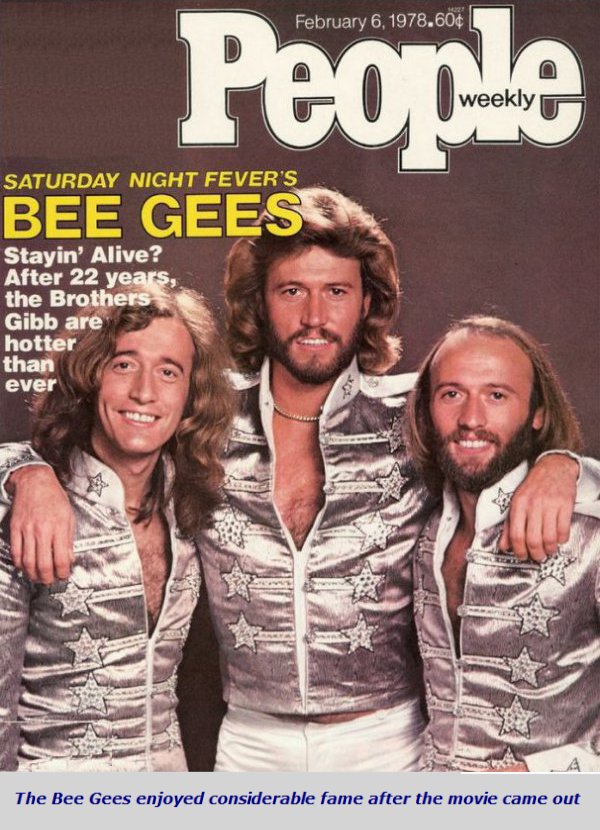
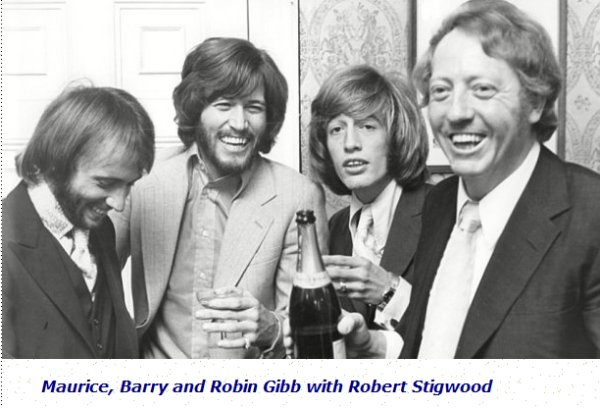

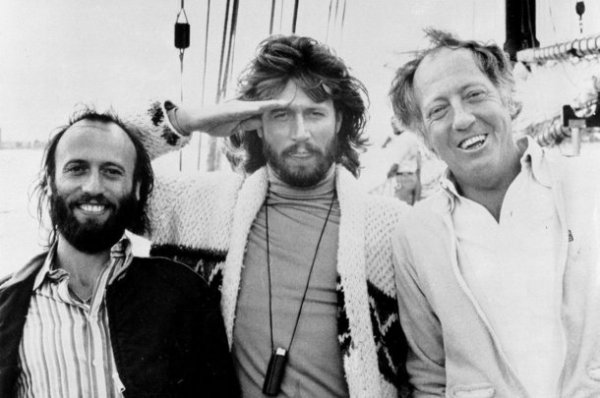
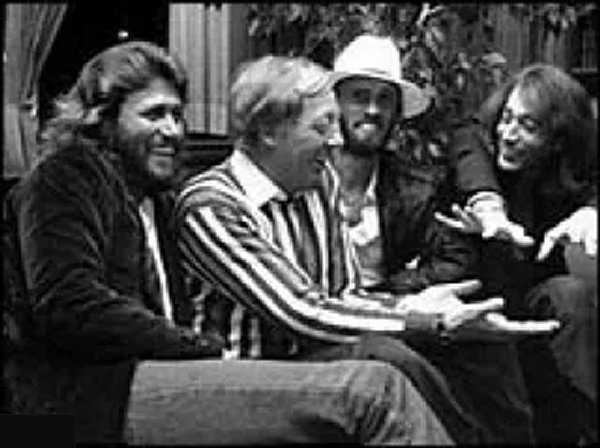
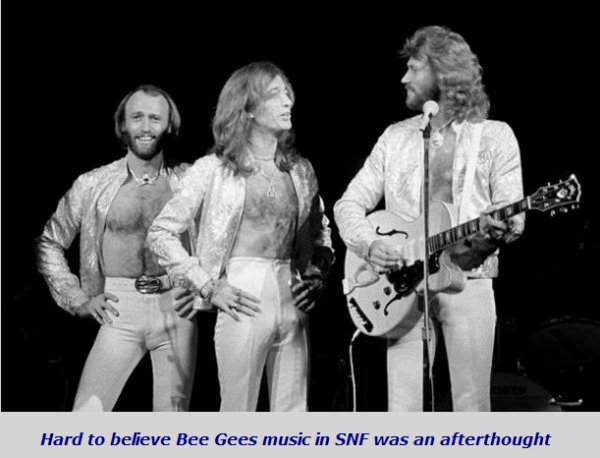
|
It was uncanny how
John Travolta was tailor-made for the role as the cocky yet moody dance stud.
Through it all, everyone knew that
Travolta, all slick hair and white teeth, was the glue
holding the show together.
"There was an energy surrounding
John unlike anything I had ever seen," said actress Dinah Manoff.
"It was like being in the
presence of something epic. I had never been around a
charisma that was at its peak that way. I cannot describe it
to you. I have never been around another movie star who
carried the energy John did in those days. And
the funny thing is that John didn't even know it how good he
was."
After
Travolta wrapped up Saturday Night Fever, he
moved on to new episodes of Welcome Back, Kotter
and the filming of Grease.
Travolta was so busy, he did not have a chance to watch
the edited product. So Travolta asked some of the cast
if they would let him know. "I don't know if the
movie's any good," he said. "I wish you guys could tell me."
"And
John meant it. John had no idea how good the movie was," says Didi
Conn, who attended the screening. "The whole cast flipped out over John.
We said,
'Are you kidding?' It was part of this explosion around
him."
Indeed, this was
John Travolta's Brightest Day. The combination
of Grease and
Saturday
Night Fever
changed his life.
Travolta was wonderful as the ambitious young man who yearned to make
something of himself. Thanks to his performance, the
movie struck
a chord with audiences all over the world.
Saturday
Night Fever gave the decade its cultural identity and John
Travolta became a pop culture icon.
A star was born and Travolta had Robert Stigwood to thank.
For this moment
in time, John Travolta became the brightest star in the galaxy.
|
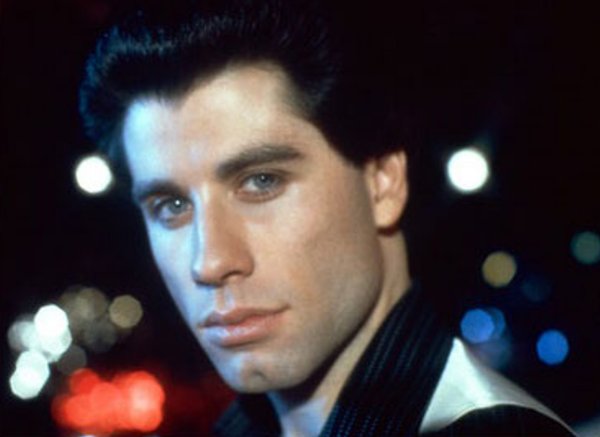
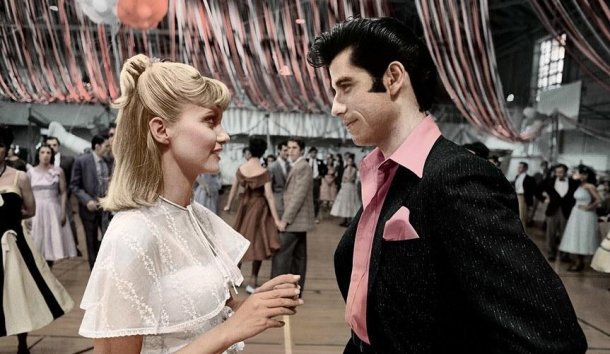 |
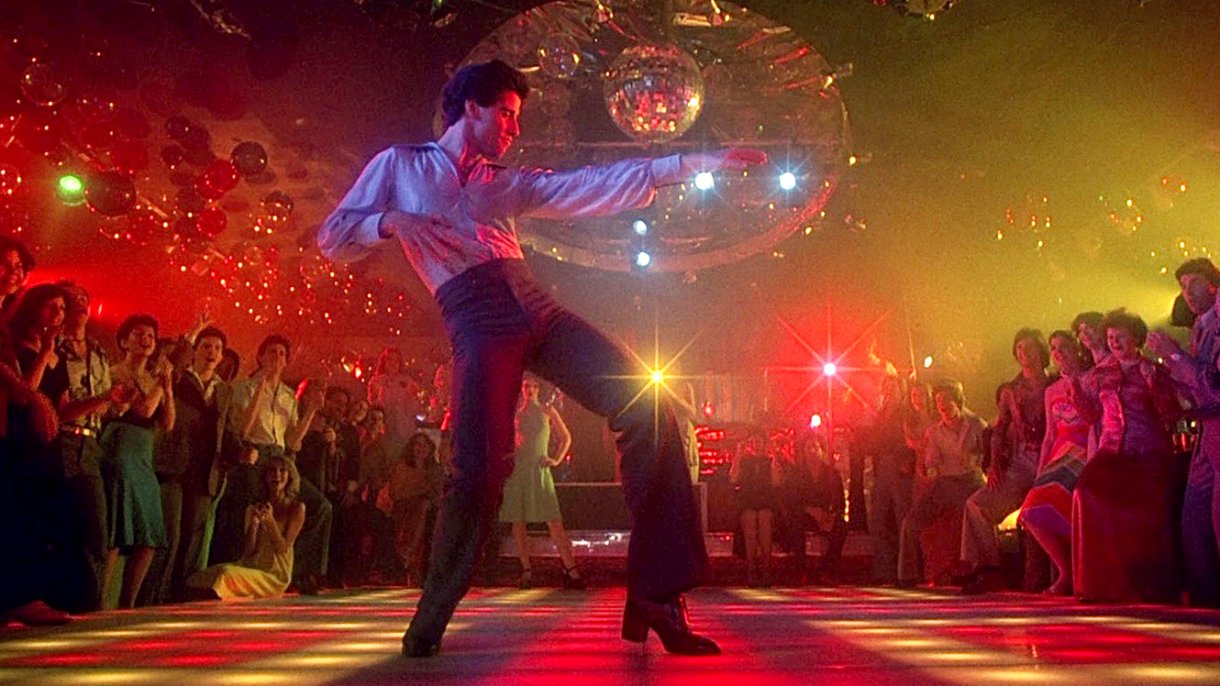
Rick Archer's
Note:
Every once in a while a movie
comes along that no one expects much from, but somehow it becomes special. Most people
point to Casablanca as a prime example. In a
similar fashion,
Saturday Night Fever
became a classic. No one
expected much from
Stigwood's
low-budget
Disco movie, but
this hard-hitting story of directionless youth
with Travolta as the Dancing Rebel without a Cause packed quite a punch.
Keep in mind this movie was supposed to be a low-budget
throwaway project. All Stigwood was trying to do was
keep Travolta busy until Grease came
available. Yet by complete accident, Stigwood caught
three talents... Travolta, Bee Gees, and script writer Wexler... at the
absolute hungriest part of their careers. Thanks to
the power of Synchronicity, this trio came up with
something transcendent. Of course the music was
sublime. But
sometimes music and a good script isn't enough. It
helps to have an emerging star.
Saturday Night Fever
revived the career of the Bee Gees. Their
music anchored
the
best-selling movie soundtrack album of all time.
Yet
strangely enough the soundtrack was snubbed at the Oscars in
1978. Not one nomination. Interesting.
Considering the importance Saturday Night Fever
had on my life, I studied Robert Stigwood with intense
curiosity. How do successful people become successful?
Samuel Goldwyn, the movie mogul of MGM, is credited with
saying, "The harder I
work, the Luckier I get." Goldwyn
later said more.
"I
think Luck is the sense to recognize an
opportunity and the ability to take advantage of
it. Everyone has bad breaks, but everyone also has opportunities. The man who can smile at his bad breaks and grab
his chances gets on with things."
-- Samuel Goldwyn
In Stigwood's case,
clearly
he had a keen eye for talent. And then there
was Stigwood's willingness to
bet on his instincts. Often the difference
between a successful person and a failure is not superior
ability or better ideas, but
rather the courage one has to bet on
one's ideas and take a calculated risk.
There are many tales of successful people
who speak of being
in the right place at the right time. Thanks to a
lucky break, they were chosen for a position ahead of
other people just as talented and just as ambitious.
However, deep
down
I could not escape the feeling that Stigwood was also Lucky
in an extraordinary way.
Exhibit One was the perfect script at the perfect time.
Exhibit Two was the last-minute inclusion of the Bee Gees.
To me, the story of
Robert Stigwood is pure Fate. At this
one magic time in his life, everything he did turned to Gold.
Even when Stigwood screwed up... Travolta and the Grease
mistake, hiring the wrong guy to write the script, John Avildsen
ignoring the Bee Gees... things worked to perfection.
To me, the
strangest thing of all is that the entire phenomenon pivoted
on a fake story. Without Nik
the Slik and his brazen nerve to pass a fairy tale off as
the Real Thing, Disco would be little more than a footnote
as silly music back in the Seventies. There
would be no Bee Gees megahits, no Travolta
superstardom, no Disco acrobatics, and no nostalgic Disco parties
complete with ugly retro clothes and YMCA redos.
All because some English stiff made up a wild yarn and
sold it as truth. Barry
Gibb once said to Nik Cohn, "This is all your bloody fault, isn't it?" Cohn
smiled and nodded.
Although
I don't approve of Cohn's methods, Nik the Slik was
clearly Destined to play a major role in this unusual story. Nik Cohn definitely got lucky. But you know what?
So did a lot of people! Stigwood, Travolta,
Cohn, Wexler, the Bee Gees to name a few. Throughout the
behind-the-scenes story
of Fever, I got the feeling
that everyone involved suddenly became more energetic, more
instinctive, more creative than at any other time in their
life. Everyone was at the top of their game. Using a
sports cliche, it was a career year for everyone.
We bristle at the thought that Cohn
played Stigwood to the tune of half a million. But
Stigwood didn't care. He knew Cohn was over-rated, but
he also believed he was looking at one hundred million.
So he paid Cohn $150,000 to write the movie
script, then replaced him with Norman Wexler, a man said to
be a lunatic.
Here again, everything Stigwood touched turned to gold.
Wacko Wexler took a fake 15 page magazine story and gave
this low-budget movie a truly extraordinary script.
Wexler was nominated for an
Oscar for his work.
Want to know something interesting?
Stigwood predicted a box office of $100 million. That
is exactly how well the movie did. In addition, the
soundtrack became the best-selling album in music history,
selling 40 million copies. Let's say each album sold
for ten bucks. 400 million in sales. Add box
office and soundtrack together. Half a Billion.
And what was the budget? 3.5
million.
The way Fever worked out so perfectly defies
the imagination. In fact, so many things clicked, one
might believe Robert Stigwood had the Wheel of Fortune spinning in his direction
and brought everyone else along for the ride.
This is why I call it the 'Robert Stigwood Synchronicity'.
|
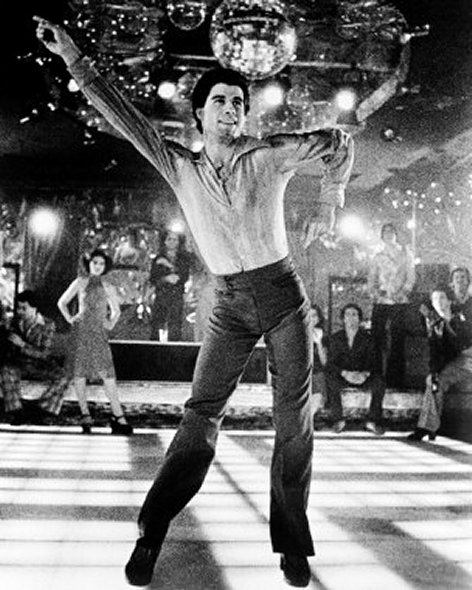
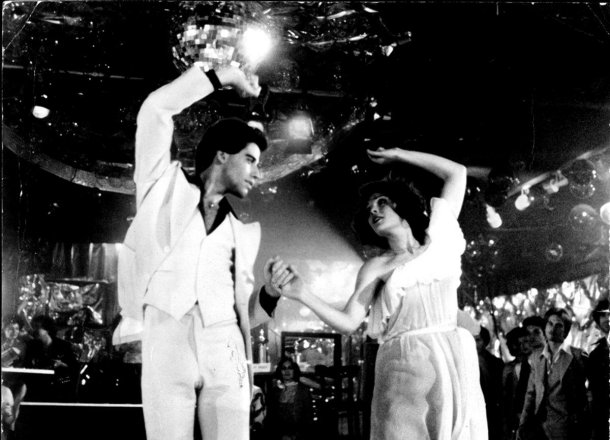
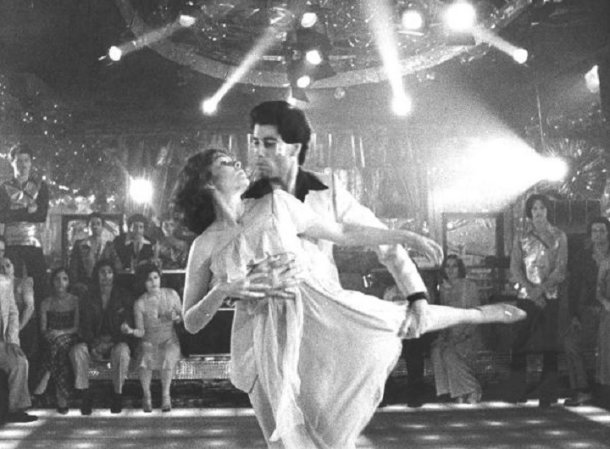
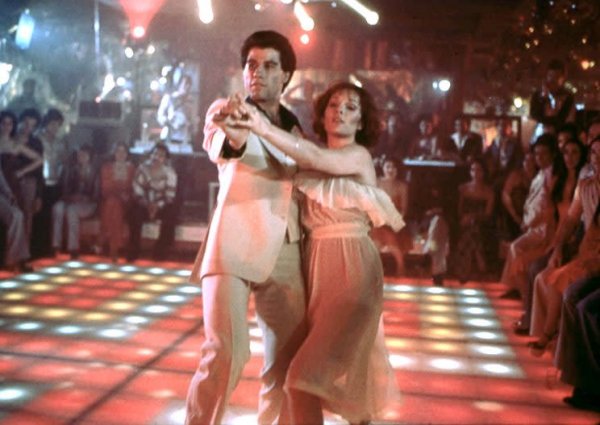
|
RICK ARCHER'S LIST OF
SUSPECTED SUPERNATURAL EVENTS
|
| |
|
059 |
Suspicious |
Synchronicity |
1977 |
| |
Robert Stigwood's Saturday Night Fever Synchronicity: Nik Cohn,
John Travolta, Bee Gees, Norman Wexler |
|
| |
|
|
|